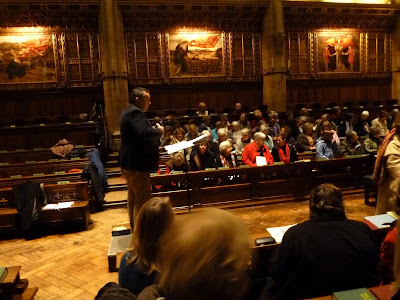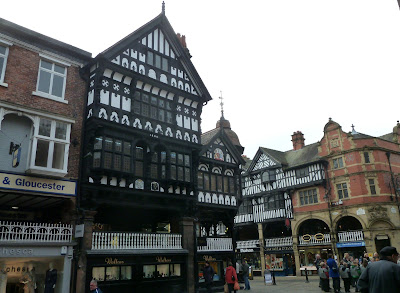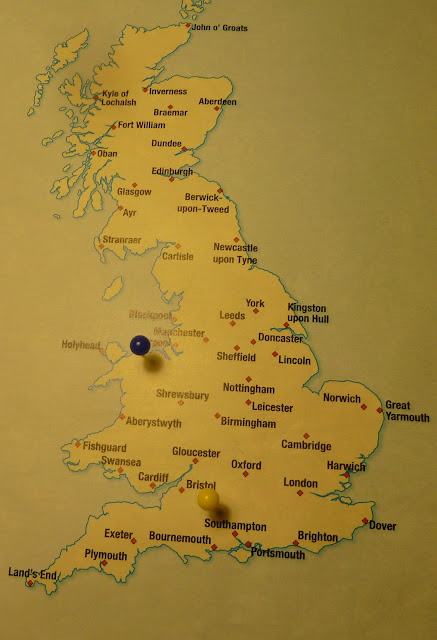Dresses from the 18th century, with shoes to match.
I braved the bone shaker bus on Wednesday morning, for an uncomfortable journey into Bath to meet up with Jo at the Assembly Rooms, for another visit to the wonderful "Bath Museum of Costume." We were visiting the "Fifty Fabulous Frocks" exhibition, staged to celebrate 50 years since the opening of the museum in 1963. The museum houses some lovely clothes, some of which I can remember wearing in the 1950´s and 60`s. Had I kept my mini-skirts, I could have offered them to the museum as reminders of a past era.
Versace Dress with a floral print.
I didn`t buy a catalogue, so cannot write the details of these dresses, but I do remember that the yellow dress above, designed by Versace, was wore to a party given by Sir Elton John. Many of the dresses have been loaned or given to the museum by several celebrities. A very smart black Dior suit was donated by Sian Philips, the actress, and also a skinny dress by Twiggy. Some of the dresses were designed and worn by "bean poles," ladies who were so thin, that if they turned sideways, you´d be unable to see them!
A 1930´s style beaded dress and a dress with a centre printed panel.
The pinkish, beaded dress would have looked lovely on a slender lady, as she danced at an evening party. The fine fabric must have enhanced her movements, and the beads would have glistened in the party lights! Ohh, so romantic! Each bead would have been hand stitched to the fabric, and the dress must have cost a fortune. I´m not so keen on the white dress with the blue printed panel, although the design is interesting with its Art Deco shapes.
Each year a special dress is chosen as "Dress of Year," and this year a design by the late Alexander McQueen was chosen.
It was displayed on a bed of cotton wool, and looked mighty impractical to wear. I think I would tripped up on the many layers of folded fabric. I cannot guess what it cost, but I certainly wouldn´t want one, I much prefer the beaded pink shimmy dress. The link below will take you to the museum website, with all the information about the museum and its exhibitions throughout 2013.
It was displayed on a bed of cotton wool, and looked mighty impractical to wear. I think I would tripped up on the many layers of folded fabric. I cannot guess what it cost, but I certainly wouldn´t want one, I much prefer the beaded pink shimmy dress. The link below will take you to the museum website, with all the information about the museum and its exhibitions throughout 2013.
Fashion Museum website – Welcome to the Fashion Museum
www.museumofcostume.co.uk/
The Assembly Room restraurant.
We took tea and refreshments in the Georgian cafe in the Assembly Rooms. This building was damaged in the war, but has been beautifully restored to its former glory, and is often used by film companies when filming Jane Austen adaptations, or other costume dramas. This small room, together with the other large ballroom, assembly room, and smaller side room, make up a group of the best preserved Georgian spaces in GB. Great chandeliers grace the ceilings, and the whole building has a lovely feel about it.
Unfortunately the prices here were not Georgian, with a cuppa and two biscuits costing me "an arm and a leg."
Unfortunately the prices here were not Georgian, with a cuppa and two biscuits costing me "an arm and a leg."





































